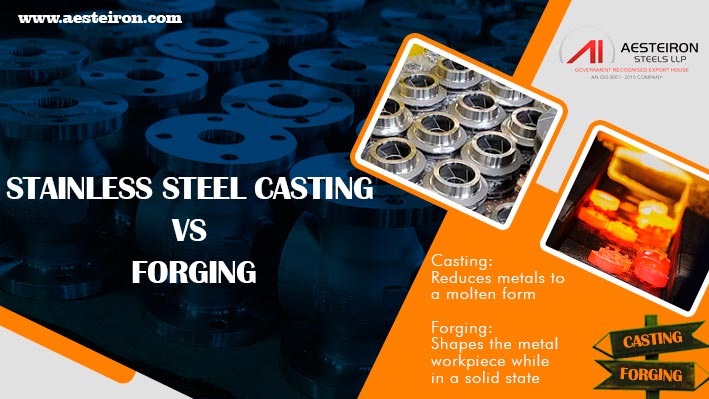
To help you make an informed decision between casting and forging, refer to the table below. It outlines key factors that will guide you in choosing the most suitable method for your specific application.
Table of contents
- Difference Between SS Forging vs Casting
- Stainless Steel Casting Process
- Reasons to Choose Forging and Casting Products
- SS 304 Castings Applications
- Advantages Of SS Investment Casting
- Stainless Steel Cast Grades and Composition
- ASTM A351 CF8M Cast Fittings Testing Methods
- Types of Stainless Steel Pressure Die Casting Processes
- Methods Used For Stainless Steel 316 Casting
- SS Investment Casting Vs Sand Casting
Difference Between SS Forging vs Casting
| Features | Stainless Steel Casting | Stainless Steel Forging |
|---|---|---|
| Process | Casting involves melting metal and pouring it into a mold | Forging shapes metal while it is in a solid state using pressure |
| Product Size | Limited by mold size and thickness | Can produce a wide range of sizes |
| Shape Complexity | Best for complex and detailed designs | More suitable for simpler, straightforward shapes |
| Tolerance | Less precise tolerances | Higher precision and tighter tolerances |
| Material Waste | Minimal material waste | Higher waste due to trimming and cutting |
| Strength | Lower tensile and impact strength | Higher mechanical strength and durability |
| Surface Finish | Typically rougher surface | Better surface finish |
| Cost | More cost-effective for small to medium runs | Higher initial tooling costs, better for large volumes |
| Internal Defects | More prone to porosity and shrinkage | Fewer internal defects, better structural integrity |
| Applications | Used for intricate components like pump housings | Preferred for structural and high-strength parts |
Understand the Process of Stainless Steel Precision Casting and Forging
This detailed guide will walk you through the processes involved in stainless steel casting and forging, helping you understand which method suits your needs best.
Stainless Steel Casting Process
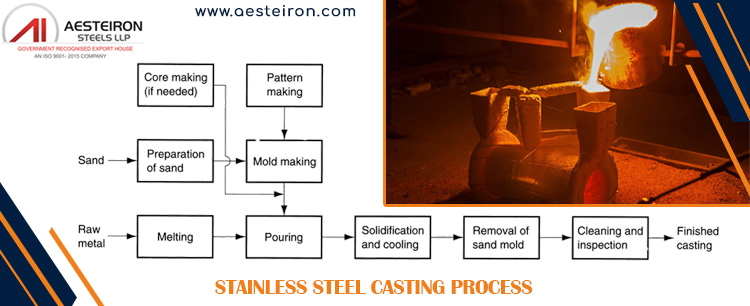
Step 1: Pattern Making
Patterns are typically made from wax, wood, or plastic. In investment casting, wax patterns are used as a replica of the final product.
- Wax patterns
- Plastic patterns
- Wooden patterns
- Foam patterns
Step 2: Casting Process
Various casting methods include sand casting, shell mold casting, and investment casting:
- Shell Mold Casting: Creates thin molds with resin and sand, ideal for precision parts.
- Ceramic Mold Casting: Offers excellent surface finish and dimensional accuracy.
Step 3: Melting and Pouring
Metal is melted in an electric arc furnace and carefully poured into the mold to avoid damaging the shell or sand.
Step 4: Finishing
After cooling, the casting is cleaned, and surfaces are ground, polished, or machined to meet specifications.
Top 5 Reasons to Choose Forging and Casting Products
Choosing between forging and casting depends on several factors, including strength, complexity, and cost. Here's a comparison of their advantages:
Reasons to Select Forging and Casting Products
| Forging | Casting |
|---|---|
|
|
Uses and Applications of Stainless Steel Forged and Cast Products
Stainless steel forged and cast products are widely used across various industries due to their strength, corrosion resistance, and versatility.
SS 304 Castings Applications
- Oil and gas industry
- Construction and architecture
- Power generation
- Food processing
- Automotive and transport
- Chemical and pharmaceutical
- Kitchenware and cutlery
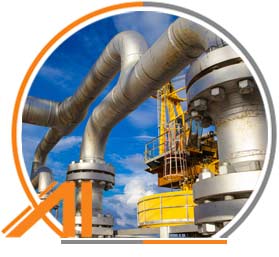
Advantages Of SS Investment Casting
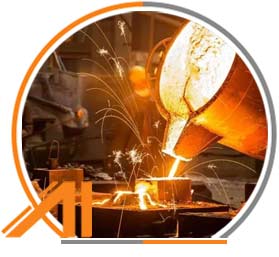
- High heat resistance
- Corrosion-resistant
- Long lifespan
- Environmentally friendly
- Excellent dimensional accuracy
- Recyclable
- Resistant to wear and tear
Technical Specifications and Grades of Stainless Steel Cast Fittings
Below is a summary of the technical details and grades of stainless steel cast fittings. These specifications ensure performance in demanding applications.
Stainless Steel Cast Grades and Composition
| Austenitic Stainless Steel Casting Grades | ||||||||
|---|---|---|---|---|---|---|---|---|
| Â | Â | 303 | 304 | 304l | 316 | 316l | 347 | 317 |
| Silicon | Min-Max | 2.0 Max | 2.0 Max | 2.0 Max | 2.0 Max | 1.5 Max | 2 Max | 1.5 Max |
| Manganese | Min-Max | 1.5 Max | 1.5 Max | 1.5 Max | 1.5 Max | 1.5 Max | 1.5 Max | 1.5 Max |
| Carbon | Min-Max | 0.16 Max | 0.08 Max | 0.03 Max | 0.08 Max | 0.03 Max | 0.08 Max | 0.08 Max |
| Chromium | Min-Max | 18.0 -21.0 | 18.0-21.0 | 17.0-21.0 | 18.0-21.0 | 17.0-21.0 | 18.0-21.0 | 18.0-21.0 |
| Nickel | Min-Max | 9.0-12.0 | 8.0-11.0 | 8.0-12.0 | 9.0-12.0 | 9.0-13.0 | 9.0-12.0 | 9.0-13.0 |
| Phosphorus | Max | 0.04 | 0.04 | 0.04 | 0.04 | 0.04 | 0.04 | 0.04 |
| Molybdenum | Min-Max | 0.40-0.80 | Â | Â | 2.0-3.0 | 2.0-3.0 | Â | 3.0-4.0 |
| Sulfur | Min-Max | 0.20-0.40 | 0.04 Max | 0.04 Max | 0.04 Max | 0.04 Max | 0.04 Max | 0.04 Max |
| Ferritic Stainless Steel Casting Grades | |||||
|---|---|---|---|---|---|
| Â | Â | 409 | 442 | 446 | |
| Carbon | Max | 0.16 | 0.3 | 0.5 | |
| Silicon | Max | 2 | 1.5 | 1.5 | |
| Manganese | Max | 1.5 | 1 | 1 | |
| Nickel | Max | 0.5 | 2 | 4 | |
| Chromium | Min-Max | 10.5-11.75 | 18.0-22.0 | 26.0-30.0 | |
| Molybdenum | Max | Â | Â | Â | |
| Sulfur | Max | 0.045 | 0.04 | 0.04 | |
| Phosphorous Max | 0.045 | 0.04 | 0.04 | ||
| Copper | Max | Â | Â | ||
| Martensitic Stainless Steel Casting Grades | ||||||
|---|---|---|---|---|---|---|
| Â | 416 | 410 | 15-5 PH | 420 | 17-4 PH | |
| Silicon | Min-Max | 1.50 Max | 1.5 Max | 0.50-1.00 | 1.0 Max | 0.50-1.00 |
| Carbon | Min-Max | 0.15 Max | 0.05-0.15 | 0.05 Max | 0.15 Max | 0.06 Max |
| Manganese | Max | 1.25 | 1 | 0.6 | 1 | 0.7 |
| Nickel | Min-Max | 0.50 Max | 1.0Â Max | 4.20-5.00 | Â | 3.60-4.60 |
| Chromium | Min-Max | 11.5-14.0 | 11.5-14.0 | 14.00-15.50 | 12.0-14.0 | 15.5-16.7 |
| Phosphorous | Max | 0.05 | 0.04 | 0.025 | 0.04 | 0.04 |
| Molybdenum | Min-Max | 0.50 Max | 0.5 Max | Â | Â | Â |
| Copper | Min-Max | 0.50 Max | 0.50 Max | 2.5-3.2 | Â | 2.8-3.5 |
| Sulfur | Min-Max | 0.15-0.35 | 0.04 Max | 0.025 Max | 0.03 Max | 0.03 Max |
| Duplex Stainless Steel Casting Grades | |||
|---|---|---|---|
| Â | ASTM A890 Grade 4A (CD3MN) | ASTM A890 Grade 1A (CD4MCu) | |
| Carbon | Max | 0.03 | 0.04 |
| Silicon | Max | 1 | 1 |
| Molybdenum | Min-Max | 2.5-3.5 | 1.75-2.25 |
| Chromium | Min-Max | 21.0-23.0 | 24.5-26.5 |
| Manganese | Max | 1.5 | 1 |
| Nickel | Min-Max | 4.5- 6.5 | 4.75-6.00 |
| Phosphorous Max | 0.04 | 0.04 | |
| Copper | Min-Max | 1.00 Max | 2.75-3.25 |
| Sulfur | Max | 0.02 | 0.04 |
Testing Required for Stainless Steel Precision Casting
Testing is essential to ensure the quality, safety, and reliability of stainless steel castings. It helps identify potential flaws and ensures the material meets required standards.
ASTM A351 CF8M Cast Fittings Testing Methods
- Mechanical Testing
- Hardness Test
- Tensile Test
- Impact Test
- Visual Inspection
- Chemical Composition Analysis
- Dimensional Inspection
- Ultrasonic Testing
- Radiographic Testing
Types of Stainless Steel Pressure Die Casting Processes
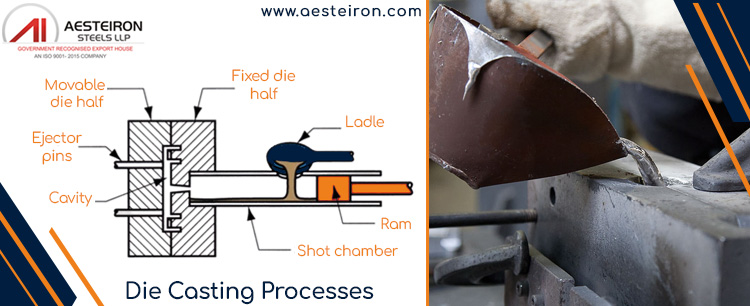
Pressure die casting is divided into two main types:
High Pressure Die Casting
- Divided into cold and hot chamber systems
- Used for high-speed production with tight tolerances
- Requires high pressure (up to 1100 bar)
- Produces near-net-shape components
Low Pressure Die Casting
- Used for high-quality castings with minimal defects
- Not suitable for high-melting-point metals like stainless steel
Methods Used For Stainless Steel 316 Casting
| Methods | Description |
|---|---|
| Investment Casting | Uses wax or foam patterns to create detailed molds |
| Sand Casting | Utilizes sand molds for complex and precise parts |
| Continuous Casting | Used for long-length stainless steel products |
| Pressure Die Casting | Creates near-net-shape components with high precision |
| Centrifugal Casting | Uses centrifugal force to fill molds |
| Lost Wax Casting | Eliminates the wax pattern after casting |
SS Investment Casting Vs Sand Casting
| Features | Stainless Steel Investment Casting | Sand Casting |
|---|---|---|
| Material | High melting point alloys (e.g., stainless steel) | Low to medium-melting-point metals (e.g., aluminum) |
| Surface Finish | Smooth and refined | Coarse, often requiring post-processing |
| Dimensional Accuracy | High precision and tight tolerances | Lower precision, more variation |
| Complexity | Capable of producing intricate shapes | Best for simple, less detailed parts |
| Tooling | Expensive but reusable | Relatively inexpensive, often single-use |
| Cost | Higher initial cost, better for precision parts | Lower cost, suitable for large-scale production |
| Applications | Aerospace, medical, automotive | General manufacturing, industrial parts |
Big size (up to 12"), ultra-abrasion, high/low temperature and corrosion resistant, and multiple length choices, Letone industrial hose are ideal for industries like construction, chemical, bulk material delivery, steel mills, oil & gas, machinery and equipment manufacturing, high pressure cleaning, F&B and applications of extremely working environment.
Industrial Hose,Pumping Hose,Oilfield Hose,Concrete Hose
Luohe Letone Hydraulic Technology Co., Ltd , https://www.litonghose.com